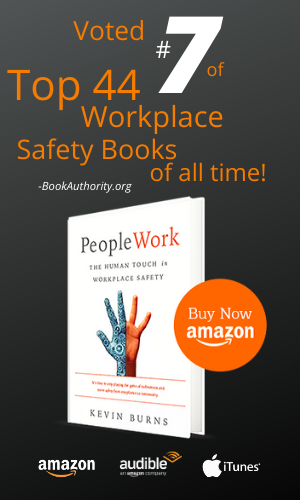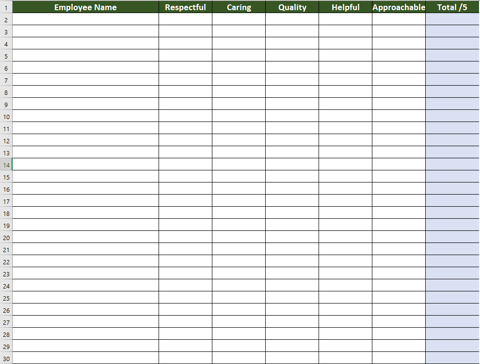Do Your Employees Have These 5 Safety Traits?
There are five traits that if your people have them, safety will be the easiest thing they do. What are the five? Find out.
Gallup polling says that two thirds of your people aren’t actively engaged in their work. So, you should notice that some days it’s an exercise in frustration to get your people to do safety. And why wouldn’t it be? You’re trying to connect people to safety before you’re connecting them to their work.
But, while two out of three aren’t actively engaged in their work, one out of three is. Someone who is connected and engaged in their work is also going to be actively engaged and connected to safely doing their work. For those employees actively engaged, there are five key traits that keeps them connected to safely doing their work and makes them leaders on your team.
As a supervisor, it's up to you to show your team members what leadership looks like. Get started on improving your ability to lead your team. Take the Free Preview of the PeopleWork Supervisor program. 5 videos over 5 days. It's free to get started.
Here are the five traits.
They have respect and demonstrably show it.
People will respect their teams will not act selfishly. They respect their workplace, their equipment, their co-workers and especially themselves. They get good sleep, stay healthy and look after their workspace and the people they work with. They have respectful conversations with their managers, their fellow employees and even with customers.
Someone who is connected and engaged in their work is also going to be actively engaged and connected to safely doing their work.
They care about themselves and their team.
They care about their work, and the people they do it with. People who don’t care about their work, don’t care much about safely doing that work. That’s why people who score high in caring are so valuable. They are engaged in what they do, they look out for the people they work with. And they care about their personal reputation and that of their employer.
They do quality work they’re proud of.
 When you care, you certainly care about the quality of your work. When you do your best work, you don’t take shortcuts or get called back to fix your work. Employees who care about quality have fewer “do-overs.” They do it right the first time which means that they are more engaged in doing the work safely. People who strive for quality are proud of their work.
When you care, you certainly care about the quality of your work. When you do your best work, you don’t take shortcuts or get called back to fix your work. Employees who care about quality have fewer “do-overs.” They do it right the first time which means that they are more engaged in doing the work safely. People who strive for quality are proud of their work.
They are focused on helping their team.
All great leaders subscribe to a mission of “giving.” They help out when they can, and they do it respectfully. They are not ones to force their opinions and suggestions onto others. That’s rarely helpful. They want their fellow team members to be as committed to quality as they are and so they will help fellow employees achieve quality and to do it right.
They are approachable and friendly.
If, as an employee, you have respect, and you care, and you do quality work, and help your co-workers, you are an approachable person. People who are not approachable will struggle to gain trust, respect and the ear of their fellow team members. People tend to gravitate towards approachable people. Approachability removes barriers to engagement and conversations.
So, what do you do with this information?
 Here’s your homework. Create your own 5-column page (like the one to the right) with one column for each of the five traits of respect, caring, quality, helpfulness and approachability. On the left side of the page write the name of each team member, one under the other, and check the corresponding columns for the traits that each employee already possesses. Total each employee’s number in the far-right column.
Here’s your homework. Create your own 5-column page (like the one to the right) with one column for each of the five traits of respect, caring, quality, helpfulness and approachability. On the left side of the page write the name of each team member, one under the other, and check the corresponding columns for the traits that each employee already possesses. Total each employee’s number in the far-right column.
Employees who check five or four columns are the most likely to be your best safety ambassadors since they already have positioned themselves as leaders (regardless of whether they hold management positions). Three-trait employees, with coaching, can quickly improve their leadership capacity.
Employees who care about quality have fewer “do-overs.”
Any of the employees checking only one or two columns need better coaching from their immediate supervisor. This tool should help to determine which traits employees already have and which ones that you, supervisors, safety people, managers or other leaders can help them develop.
Your team should already be committed to continuous improvement. This chart is also a great way to help your team members understand the expectations for exceptional employees and the things that they are being measured on. This is not a chart for public sharing, though. Do not let your employees see how they measure up against their fellow employees. Their individual performance is private. But it may help you to decide which employees to pair up together. Pairing an employee who is not proactive with an employee who is willing to help others may be just the boost they need to see it better.
--
Kevin Burns, consultant/author, works with smart, caring companies to energize safety culture, build teamwork, and get employee buy-in.
KevBurns Learning is committed to to helping companies improve safety by improving people, through creative learning materials, virtual strategy sessions, safety meeting presentations, and team coaching programs.
In 2020, BookAuthority.org named PeopleWork #7 of The Top 44 Workplace Safety Books of All Time. Buy yourself a copy of PeopleWork: The Human Touch in Workplace Safety and give another as a gift to a colleague.
Subscribe to Kevin's YouTube channel.
Subscribe to Kevin’s Blog.


